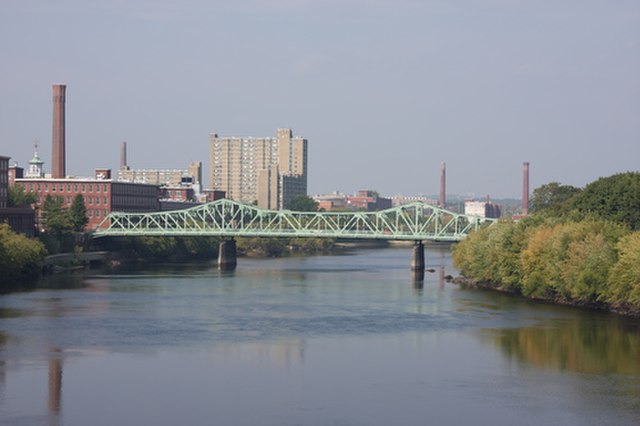The Merrimack Valley is a bi-state region along the Merrimack River in the U.S. states of New Hampshire and Massachusetts. The Merrimack is one of the larger waterways in New England and has helped to define the livelihood and culture of those living along it for millennia.
The Merrimack River in Haverhill flowing to its mouth in Newburyport, Massachusetts
The second largest city on the Merrimack River, Lowell, owes its existence to the waterpower the river provided to run its mills.
The Amoskeag Mills in West Manchester, New Hampshire, circa 2006. The massive structure once housed the largest cotton textile manufacturing plant in the world. Since the late 20th century, it has been rehabilitated for mixed use development.
The Merrimack River is a 117-mile-long (188 km) river in the northeastern United States. It rises at the confluence of the Pemigewasset and Winnipesaukee rivers in Franklin, New Hampshire, flows southward into Massachusetts, and then flows northeast until it empties into the Gulf of Maine at Newburyport. From Pawtucket Falls in Lowell, Massachusetts, onward, the Massachusetts–New Hampshire border is roughly calculated as the line three miles north of the river.
Mouth of Merrimack River in Newburyport, Massachusetts, in 2021
The Merrimack River in Pembroke, New Hampshire
The Merrimack as it flows from Haverhill to its mouth in Newburyport, Massachusetts
Merrimack River in Lowell, Mass.






